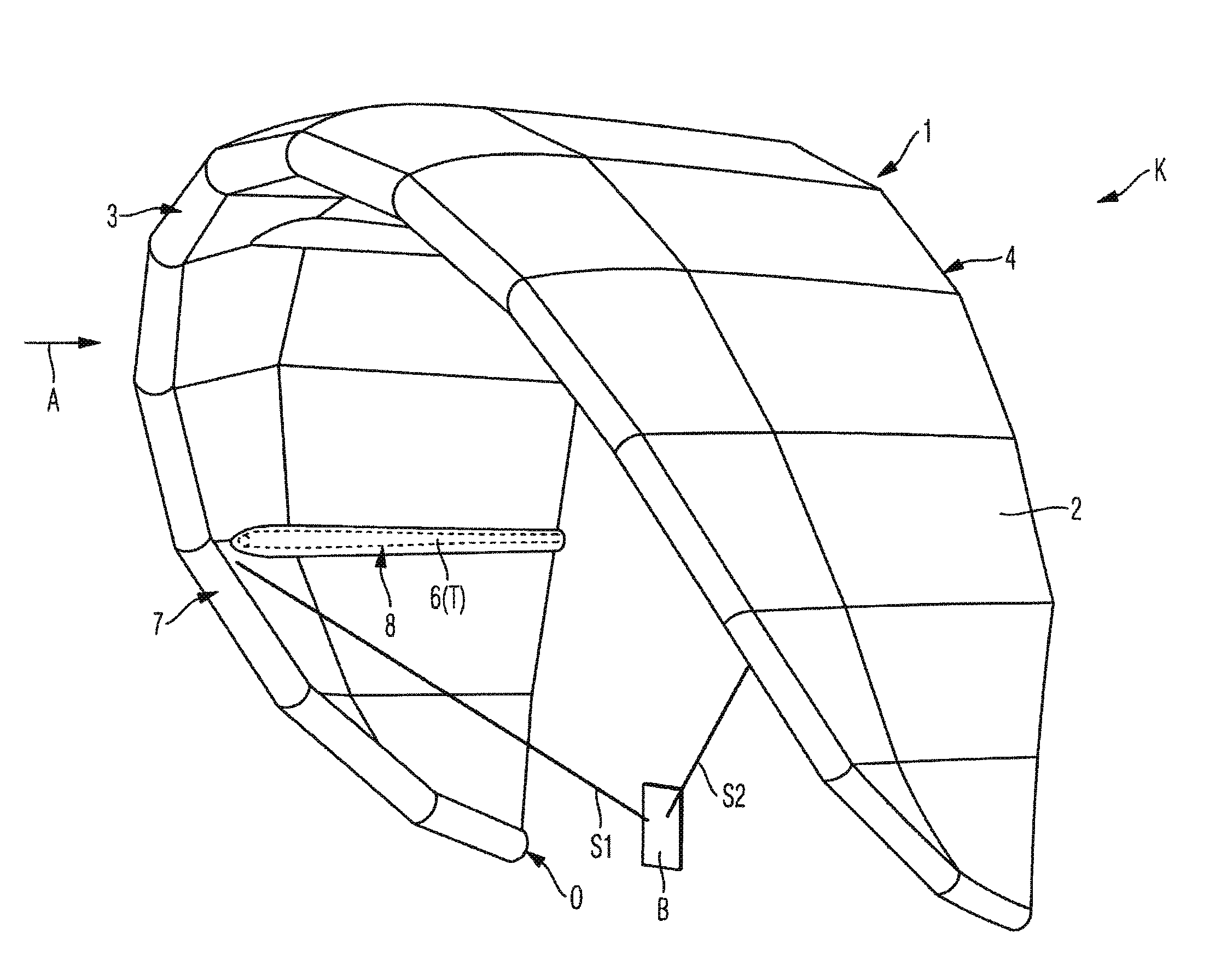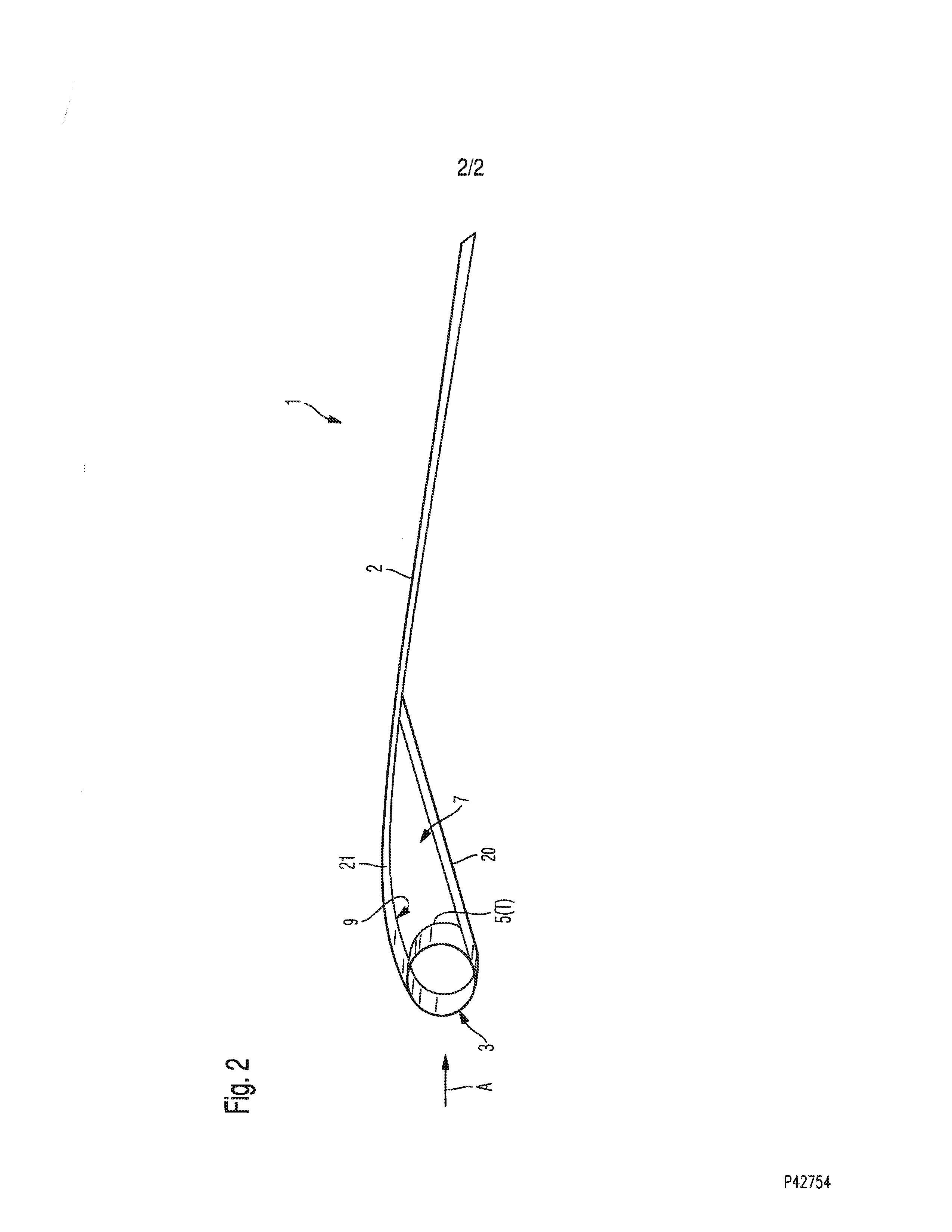Control sail for a kite
a control sail and kite technology, applied in the field of kite control sails, can solve the problems of inability to control the sail, the sail is not stable, and the sail is lowered, so as to achieve stable design, maintain the advantageous profile and dimensional stability, and facilitate the tension
- Summary
- Abstract
- Description
- Claims
- Application Information
AI Technical Summary
Benefits of technology
Problems solved by technology
Method used
Image
Examples
Embodiment Construction
[0022]FIGS. 1 and 2 show a control sail 1 and a kite K having a control sail 1 according to one exemplary embodiment of the invention. The control sail 1 has an airfoil 2 which is made of a suitable material, preferably a ripstop fabric such as polyester ripstop, for example. The airfoil 2 has a leading edge 3 which preferably extends along the entire front edge of the airfoil 2. In addition, the airfoil 2 has a trailing edge 4 which extends along the entire rear edge of the airfoil 2. The airfoil 2 extends between the leading edge 3 and the trailing edge 4.
[0023]Furthermore, the control sail 1 has a tube system T. The tube system T has a front tube 5 which extends along the leading edge 3, preferably along the entire leading edge 3. In addition, the tube system T has at least one transverse tube 6 (in FIG. 1, four transverse tubes 6, one of which is schematically illustrated) which extends between the leading edge 3 and the trailing edge 4, preferably essentially over the entire ex...
PUM
 Login to View More
Login to View More Abstract
Description
Claims
Application Information
 Login to View More
Login to View More - R&D
- Intellectual Property
- Life Sciences
- Materials
- Tech Scout
- Unparalleled Data Quality
- Higher Quality Content
- 60% Fewer Hallucinations
Browse by: Latest US Patents, China's latest patents, Technical Efficacy Thesaurus, Application Domain, Technology Topic, Popular Technical Reports.
© 2025 PatSnap. All rights reserved.Legal|Privacy policy|Modern Slavery Act Transparency Statement|Sitemap|About US| Contact US: help@patsnap.com



